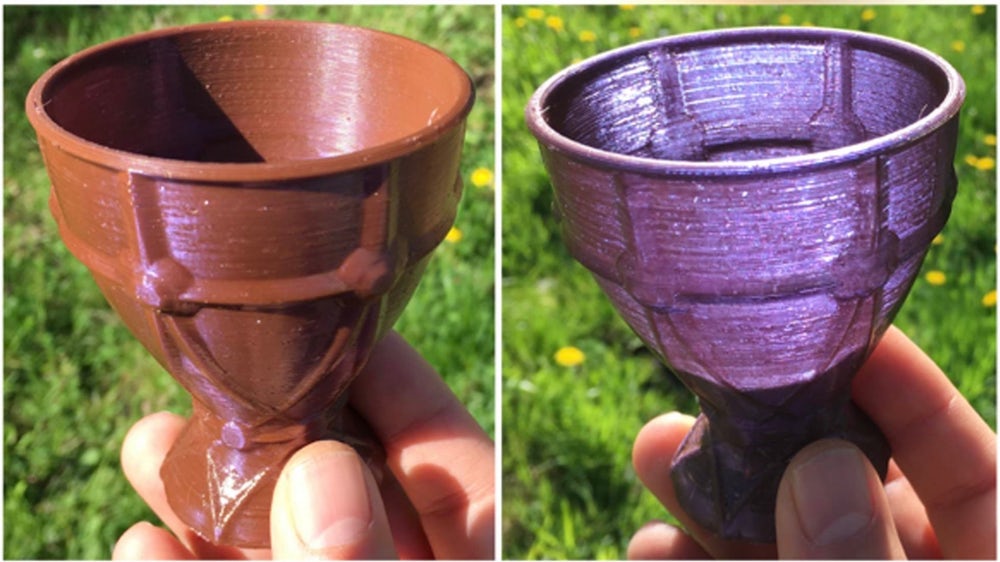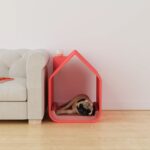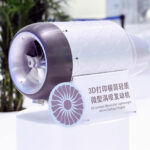Dichroic materials have existed for a long time, at least going back to the 4th century AD. These materials, most notably dichroic glass, can reflect, absorb and pass through light in different ways depending on how you view them, giving them variable transparencies and colors depending on the light source. Now, Dutch researchers at Wageningen University have developed new 3D printable dichroic materials.
The research team developed the materials using plastics and gold nanoparticles. This process has been around for a while, going back to stained glass “in medieval times, examples of which can still be found in many churches and cathedrals in Europe“, according to the researchers. Naturally, they are now applying similar principles using 3D printing.
As a result, the dichroic printing material displays two distinct color pallets depending on light source and perspective. When the light is on it, it appears to be a muddy brown. However, when the light is on the other side we can clearly see through it, making it a transparent-(ish) purple-pink. The scientists are still refining the technology, testing the effects of using various types of nanoparticles and printing materials.
Applying Gold Nanoparticles
The material itself is just a PVA to which the researchers added nanoparticles. The rest is more a trick of the light that the presence of gold creates. The gold nanoparticles are of varying sizes but they didn’t use much of it. It constitutes only 0.07 percent of the resulting composite material’s weight.
The researchers created the Dichroic AuNPs with a modified Turkevich method, boiling chloroauric acid solution and reacting it with citrate using a citrate/gold molar mix, producing AuNPs of around 10 nm. They reduced gold ions to gold nanoparticles, using the citrate as both reducing and capping agent. They then studied the nanoparticle solution with transmission electron microscopy (TEM).
“The presented synthesis is easy and fast, as it takes only few minutes to obtain the dichroic solution after the addition of the citrate. During the synthesis, the solution changed color multiple times: the yellow solution of the gold ions became blue one minute after the addition of the citrate solution. Two minutes later, the solution showed an intense black color, before becoming dichroic after another two minutes of boiling,” the researchers stated.
The technique could work with most commercial desktop 3D printers and 3D printer filament. In fact, they used PVA because of its ubiquity as a material within the 3D printing world. As they discovered, the presence of nanoparticles did not alter the properties of PVA filament. The researchers also coated the material to create two versions: one that is water soluble and one that isn’t. The dichroic printing materials provide a neat aesthetic, as well as providing potential avenues for creating filters.
Featured image courtesy of Wageningen University, retrieved via New Atlas.











